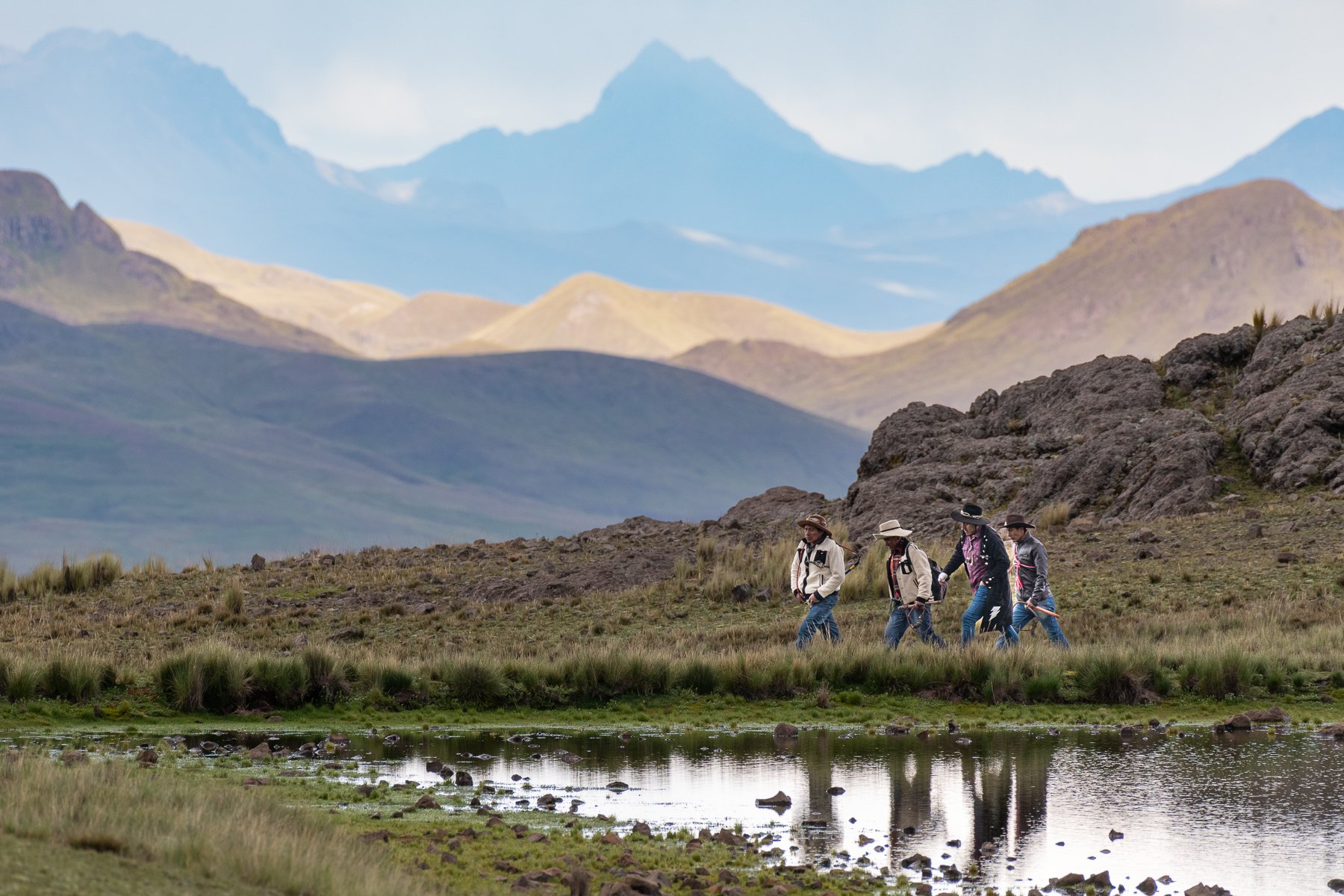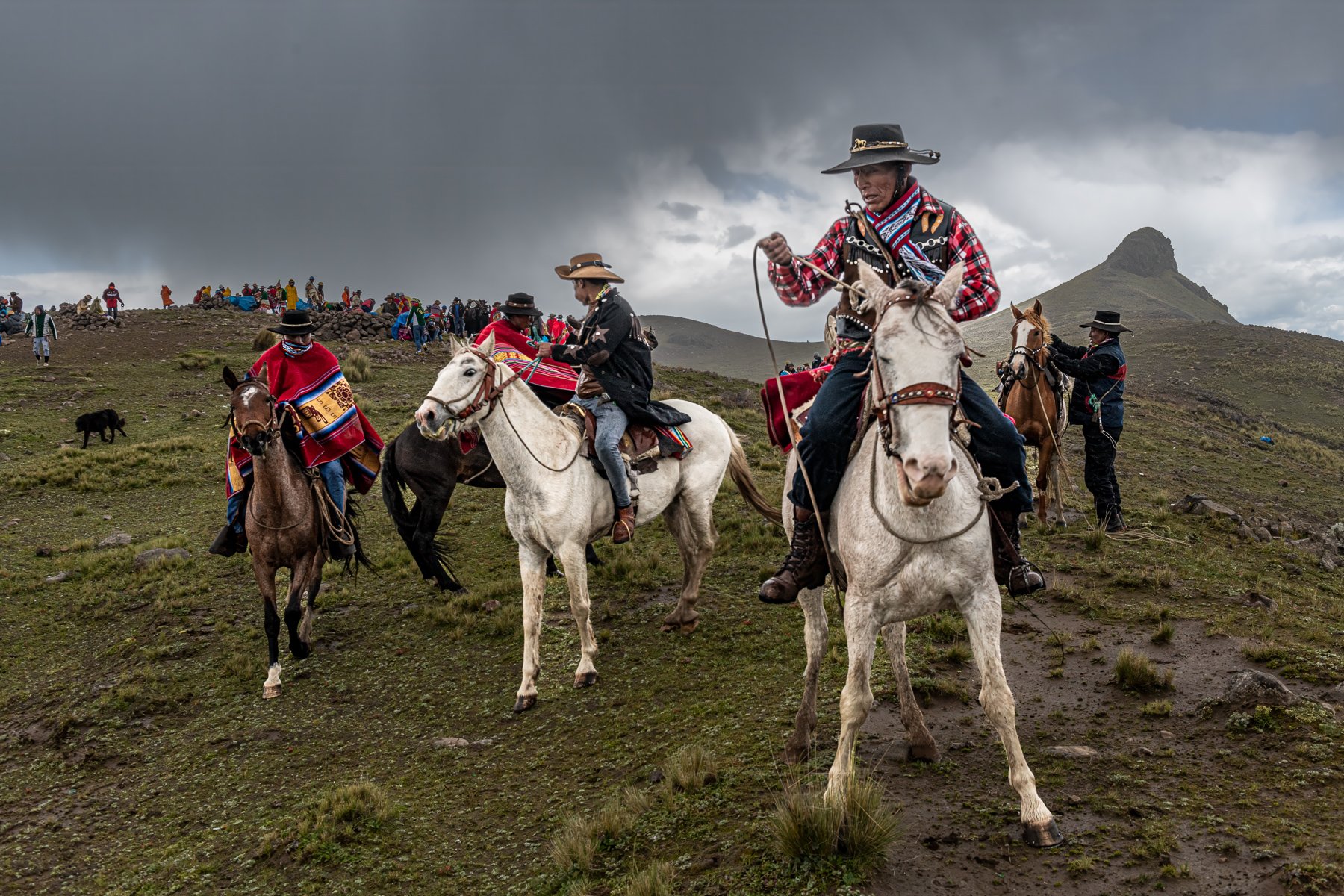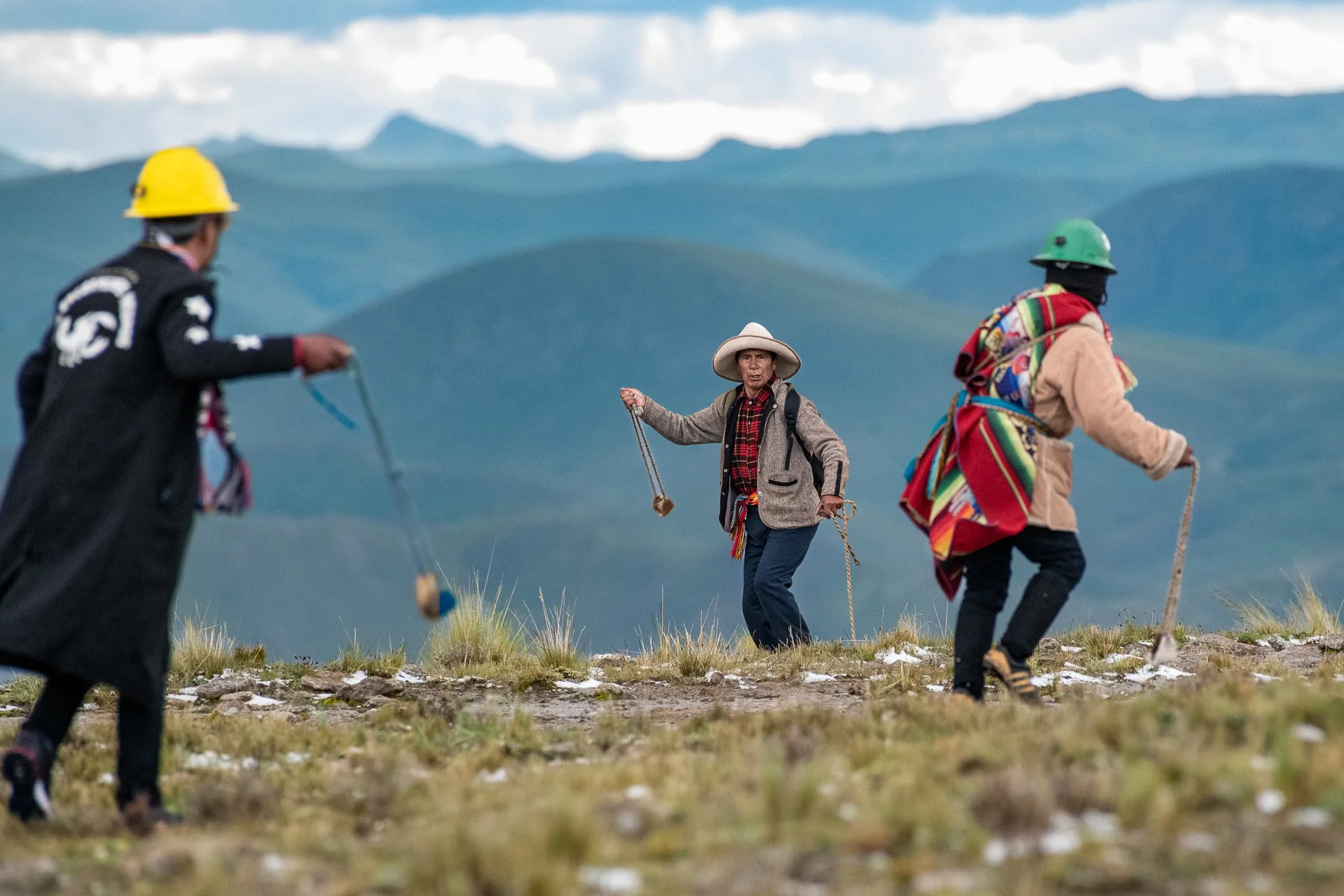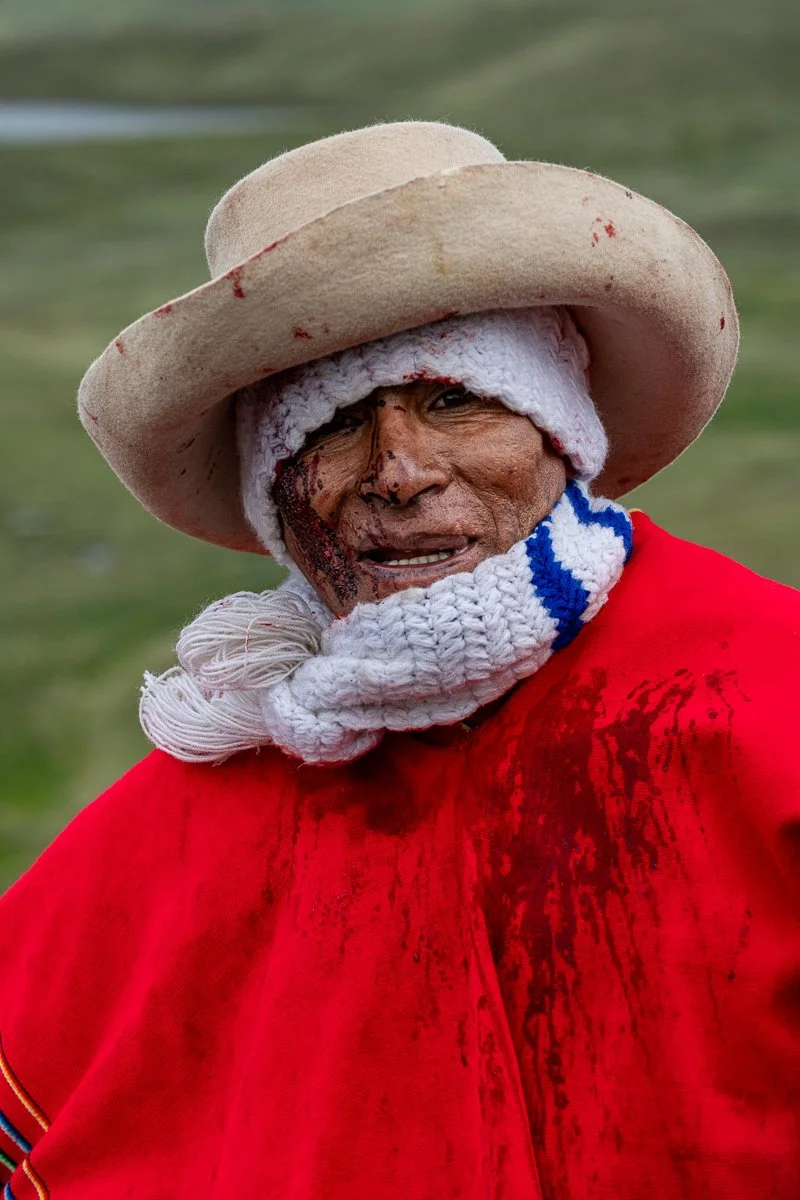Luchos De Toqto
Three times a year community members from the provinces of Canas and Chumbivilcas meet on the high plains (altiplano) of southern Peru where the border of their respective provinces meet. They come to this high plain to sing, celebrate, and participate in a ritual battle between the communities as they vie for a year of good fortune and healthy crops.
The ritual battle known as Toqto is named after the mountain on the provincial border. It dates back to historical times when regular feuding occurred over the usage of the border lands for cultivating crops. It has continued to become a tradition and is symbolic of ancient feudalism. It is a way of acknowledging the historical tensions while maintaining a level of peace. It also keeps the spirit of resistance alive. It is from this region that the rebellion against the Spanish was led by Tupac Amaru II and great pride is taken from it.
I am a firm believer that the land and environment that people live within are the major determining factors in the culture of a people. The high plains of the Andes mountains are a place that is both beautiful and harsh. That is reflected in the Quechua people and their culture. They are passionate and kindhearted people but are also strong and fierce. They have to be living here.
Nowhere is it more evident than during the luchas de Toqto (the battles of Toqto) and in this place. This vast, beautiful, and harsh landscape sets the stage for the ancestral rivalry to play out. Adversaries from each side of the border arrive in droves and position themselves on opposing high points across the vast high plain. They sing, eat, and drink in celebration beforehand as they stare each other down across the vast, space between them.
After strategizing and enough alcohol had been consumed to fortify themselves, the combatants set out on foot and horseback to confront their rivals. The two sides engage as they try to drive each other back and claim territory by using their huaraches to hurl rocks at their opponents. At closer range, whips with heavy, sharp pieces of metal on the end are used to drive back their rivals.
This battle can rage on for hours as the back and forth of gaining and surrendering land goes on. The wounded fighters are carried off the battlefield and their blood that spills onto the land is believed to be a sacrifice to Pachamama (Mother Earth) that will fertilize the land and bring a good harvest.
The worst thing that can happen is to get captured by the opposing side. It is a great embarrassment and a bad omen. This included me as the members of Chumbivilcas tried to apprehend me. Rocks landed within inches of me and they tried to surround me before the cavalry arrived and allowed me to make a run for it. There was some anger with me as the Canas members explained to me that they would have confiscated my camera gear and humiliated me. It didn’t matter that I was not a participant.
At the end of the day, the side that captured the most ground is seen as the winner. This is not the only gauge of success though as omens and signs are read to determine whether it will be a good year. Death is a frequent occurrence during Toqto. Four people died during last year’s largest battle but it is not always seen as a bad sign. It is seen as an offering that will lead to good fortune.
This battle that I attended at the beginning of February was the smallest of the three. The other two occur at the beginning of December and January. The largest is on December 8th. Although this battle is similar to that of Chiaraje which I also attended and documented, Toqto is far more feudal and fierce.
I fully intend to be there for the next big battle this coming December.
As always, thank you for your continued interest.
MB













